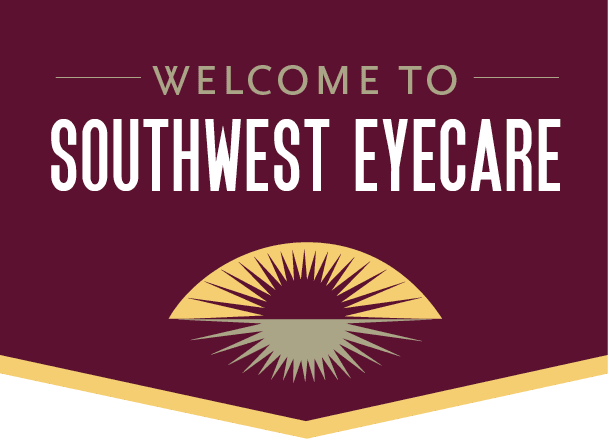
Cataracts are a problem that many people will deal with as they age. According to the American Academy of Ophthalmology, about half of all 75-year-olds have cataracts. At Southwest Eyecare, we treat many patients with cataracts, so we’re very familiar with the condition and what can be done about it. Here are the facts you should know.
What are Cataracts?
Inside your eye, tucked just underneath the cornea, is a lens. This clear lens works with the cornea to adjust the light that comes into the eye. Together, these two structures focus the light so it hits the retina just right, producing a clear image for your brain.
However, proteins can build up in that lens. These proteins clump together, causing the lens to become cloudy and discolored and impairing vision. At first, these vision changes aren’t bad, and you can deal with them by using stronger glasses or brighter light to see things. But as the condition progresses, vision gets worse until it becomes difficult to do everyday activities.
Types of Cataracts
Although cataracts always cause clouded lenses, they can be caused by different things.
Age-related
Age-related cataracts are the most common type of cataract, responsible for 95% of all cases. This process generally starts when someone is in their 40s or 50s. For age-related cataracts, it can still take years to become detectable.
Traumatic
An eye injury, where damage is done directly to the lens, could cause cataracts to form. If the eye suffers a direct hit, puncture, cut, high temperatures, or a chemical burn, the trauma can cause cataracts to form.
Congenital
Congenital cataracts are cataracts that have been present since birth. It’s generally caused by inflammation or an infection. If the mother contracts measles during pregnancy, it can cause cataracts in her baby. It can also be a genetic condition.
Secondary
In some cases, cataracts are caused by other factors, such as certain medications. They can also be the result of eye disease or infection. Some diseases, including diabetes, can also contribute.
How Cataracts Affect Your Vision
Cataracts usually start to form years before you notice them. When they develop to the point that you’re able to detect them, you can expect to notice these symptoms:
- Cloudy, hazy, or blurry vision
- Halos, or fuzzy rings you can see around lights
- Sensitivity to bright light or glare
- Colors start to look faded or yellowed
- Activities like reading require brighter lights
- Double vision in one eye
There are a number of risk factors that increase your odds of developing cataracts. The primary one is age–the older you become, the more likely proteins will build up in your lenses. But there are also other factors that increase your chances of developing cataracts.
Medical conditions, such as diabetes, certain autoimmune disorders, high blood pressure, and hypothyroidism, can all contribute to cataracts. Too much exposure to UV rays from the sun, long-term use of steroids, smoking, and excessive alcohol consumption can all make it more likely they will develop.
Although having your vision affected by cataracts can be an upsetting experience, the good news is that treatment is available and has a very high success rate. Cataract surgery replaces the clouded lens with an artificial lens, with a reported 99% success rate.
Don’t Let Cataracts Affect Your Vision – Visit Southwest Eyecare
At Southwest Eyecare, we have helped many patients with cataracts see clearly again. If you live in the Albuquerque area and are experiencing any of the symptoms of cataracts, we urge you to contact us for more information about how we can help you see clearly again. Our experienced ophthalmologists are here to diagnose and treat a wide range of eye problems. Come see us today!
Image Credit: Terelyuk / Shutterstock
